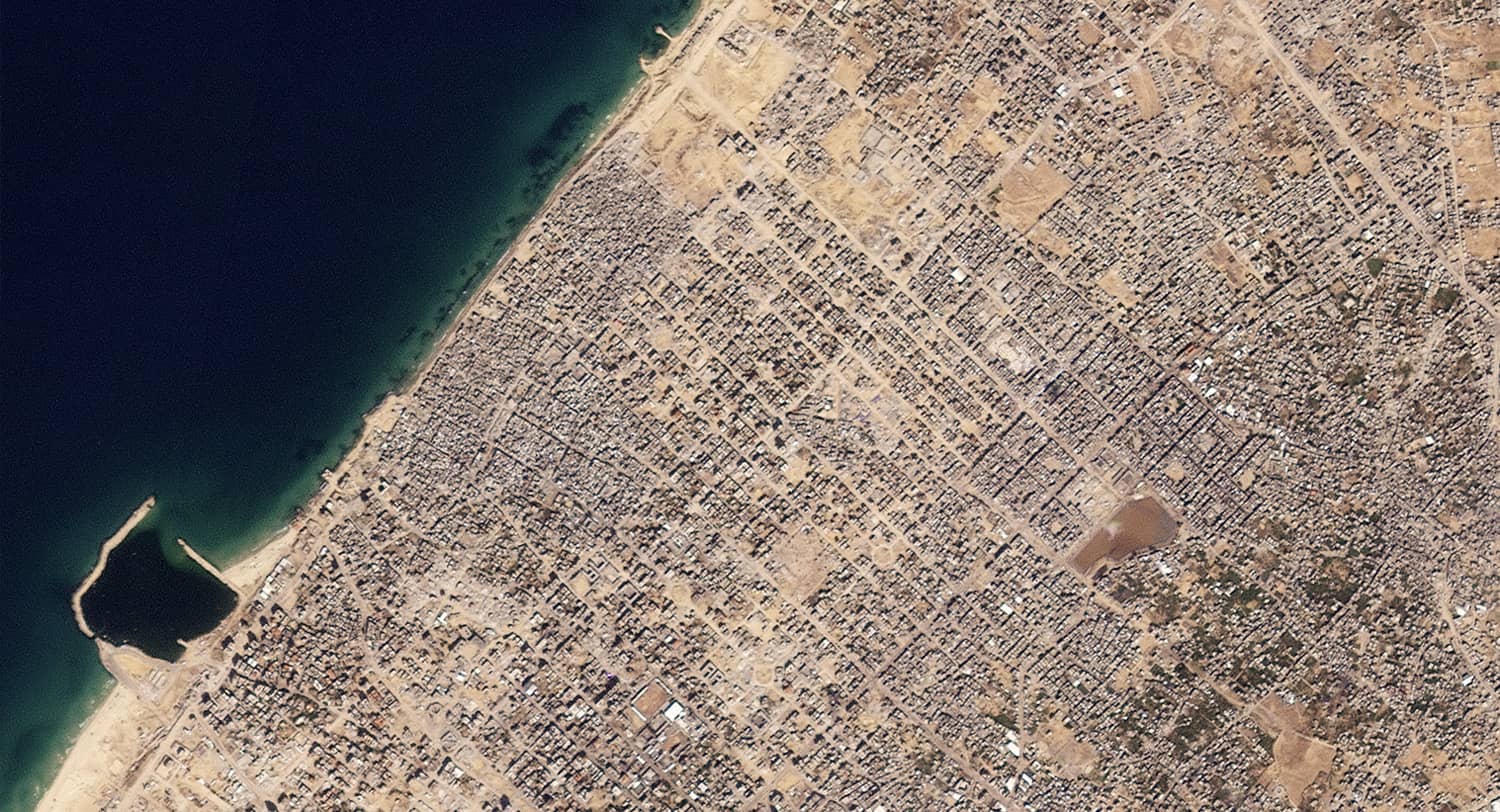Two years after October 7, 2023, governments are finally recognizing the need to adopt a plan for postwar Gaza, even while fighting is ongoing. On August 27, President Donald Trump asked Jared Kushner, an architect of the Abraham Accords, and former UK Prime Minister Tony Blair to develop a serious plan.
In parallel with this effort, an international consensus is starting to emerge: a pragmatic approach that focuses on responsibilities and authorities to deal with a destroyed landscape and a destitute population. This consensus would put Gaza under international governance for a transitional period, provide security against Hamas, and start Gaza’s physical and social reconstruction.
Several such plans exist, including one proposed by the United Arab Emirates in July 2024, and another by Blair’s team in September 2025. A third one, Plan for Postwar Gaza, was developed by a group of former senior US officials, with input from others, and updated in September 2025 (disclosure: we were among its authors).
Any postwar Gaza plan must address four issues.
Hamas Disarmament
Hamas said months ago it would turn Gaza’s governance over to Palestinian technocrats, but it refuses to give up its weapons. Hamas apparently wants to be like Hizbullah in Lebanon, able to dictate policy without running the government. That would be a recipe for continued conflict: no Israeli government would accept an armed terrorist group on its border and no foreign government would invest in rebuilding Gaza with an armed Hamas present.
Thankfully there is international consensus on this issue. Hamas’s disarmament has been a core requirement for both Israel and US President Donald Trump. Arab and European governments have come down on the side of Hamas’s disarmament in a September 12 non-binding UN General Assembly resolution that endorsed a July 2024 call for Hamas to give up its weapons.
How will Hamas be disarmed? That is clear: Israel must be allowed to finish the job of militarily defeating it while providing for humanitarian aid. That does not mean killing every last armed member of Hamas, just like the US coalition that defeated the ISIS caliphate in Trump’s first term didn’t kill every last member of ISIS. But the remaining Hamas battalions (an estimated four out of an original force of 24) must be dismembered and the Hamas government dismantled. In the meantime, the postwar force that will take over Gaza must be assembled. At present, parts of Gaza are relatively secure from Hamas or under the control of clan-based forces opposed to Hamas.
Multi-National Force under unified command
A lesson learned from other post-conflict operations: Security, reconstruction, aid, and governance all must be under the unified control of a single civilian executive (not a committee) supported by a military leader with command authority.
It would be ideal to have a UN Security Council mandate, and that should be sought, but it is not required. Under the plan we drafted, an international compact would be signed by a coalition of nations and deposited with the UN. That coalition would then authorize and oversee the Multi-National Authority that would govern postwar Gaza during a transitional period.
The Multi-National Authority would move into the parts of Gaza now controlled by the IDF or by tribal elements opposed to Hamas; it could be implemented in phases over the entire Gaza Strip. Its police force would provide security to Gazans, keeping weapons off the street in neighborhoods that are free of organized Hamas units. This would allow the IDF to withdraw from those areas, recognizing that the IDF will continue to go after Hamas remnants in parts of Gaza where Hamas wants to keep fighting.
Which countries would sign this International Compact and contribute forces and resources? As described below, US leadership is a sine qua non. But in addition, some governments have already indicated interest in such a force (the United Arab Emirates, among others).
Another lesson learned is that security and reconstruction are inter-linked. An adequate level of security is essential for governments to commit money and personnel. Otherwise, Hamas and criminal gangs will exploit any weaknesses.
US leadership but not US ownership
President Trump has repeatedly made clear that he opposes putting US boots on the ground in Gaza but believes the United States should have a leadership role in helping Gaza and Israel achieve a sustainable peace.
Here is the problem: Other governments have said they will not contribute troops or resources unless the United States is committed to this mission.
First and foremost, solving this problem requires the leadership of President Trump in personal contact with allies and partners.
Second, the US can take on the essential “back-office” functions of logistics, airlift, intelligence and, perhaps most important, liaison with the IDF commanders who will want to engage in counter-terrorism strikes as needs arise. These functions would be done from locations just outside Gaza in Israel and Sinai.
President Trump has also made clear the United States expects to be reimbursed for its costs. Frozen and seized Iranian and Hamas assets should be used to reimburse governments, including the United States, for running the Multi-National Authority and providing aid and reconstruction for Gaza’s people.
The transitional nature of the Multi-National Authority ensures against an endless “nation building” operation. “Nation building” will have to be done by the Palestinians after the Multi-National Authority’s mission is done.
Which Palestinians?
The United States will also need to bridge differences among its allies and partners on a future Palestinian state.
Arab and other countries want a “political horizon” for postwar Gaza: a Palestinian state that is governed by the Palestinian Authority after it has undergone a thorough (but never thoroughly defined) process of reform. The Israeli people, on the other hand, are opposed to such commitments having experienced a series of attacks, aimed principally at their civilians, whenever they turn over territory to a Palestinian entity, including to the Palestinian Authority.
This bridge can be constructed by artful diplomats. The likely solution is language on a “political horizon” sufficient to satisfy US allies while recognizing two unavoidable facts.
First, the Palestinian Authority must be reformed, but the fate of postwar Gaza cannot wait for that years-long process. This is not an ideological viewpoint but a simple fact: the Palestinian Authority is not competent at present to govern postwar Gaza. The last time Israel turned over Gaza to the Palestinian Authority, in 2005, it led to Hamas and years of war. Turning over Gaza directly to the Palestinian Authority would fail.
Second, the Multi-National Authority will need time to dismantle the economic and social government that Hamas built up over the past twenty years to fund its fighters and tunnels. Working with Palestinians in the five local government districts that comprise the Gaza Strip, providing them reconstruction budgets and security, will over time develop governance capability among local Palestinians in Gaza – as laid out in the US officials’ plan. That will take time to develop.
Of course, the transitional Multi-National Authority in Gaza will need to consult with the Palestinian Authority on many issues of day-to-day governance. Many non-Hamas Palestinians who can usefully contribute to postwar Gaza will have connections with the Palestinian Authority. If the Multi-National Authority succeeds, the options for Gaza’s final status will be broadened and improved and its relationship with Israel will be fundamentally different.
A final note: Details are important. For instance, setting up a unified command of the transitional authority is critical to success, but the Blair Plan includes an unmanageable rule by multiple levels of committees. Any plan must address deradicalization of postwar Gaza’s population through school and media reforms. Plans that focus concretely on current needs of the population in Gaza (and not just humanitarian but also governance and reconstruction needs) – while recognizing future aspirations with appropriate future language – are more likely to work.
Nuance is also important. The US role is critical but after Iraq and Afghanistan there can be no US ground forces. The Palestinians’ future aspirations must be acknowledged up front. And Israel can no longer be forced to accept political compromises with its security. Those in the think tanks and international community that see pressure on Israel as the solution need to give up that illusion.
Let’s be optimistic. Israel is in the final months of its war on Hamas (keep in mind the US-led war on ISIS took four years; this will be much shorter). President Trump is actively engaged and ordering his team to have a plan. Gazans are starting to put distance from Hamas, despite the dangers. It’s time for the international community to step forward.

